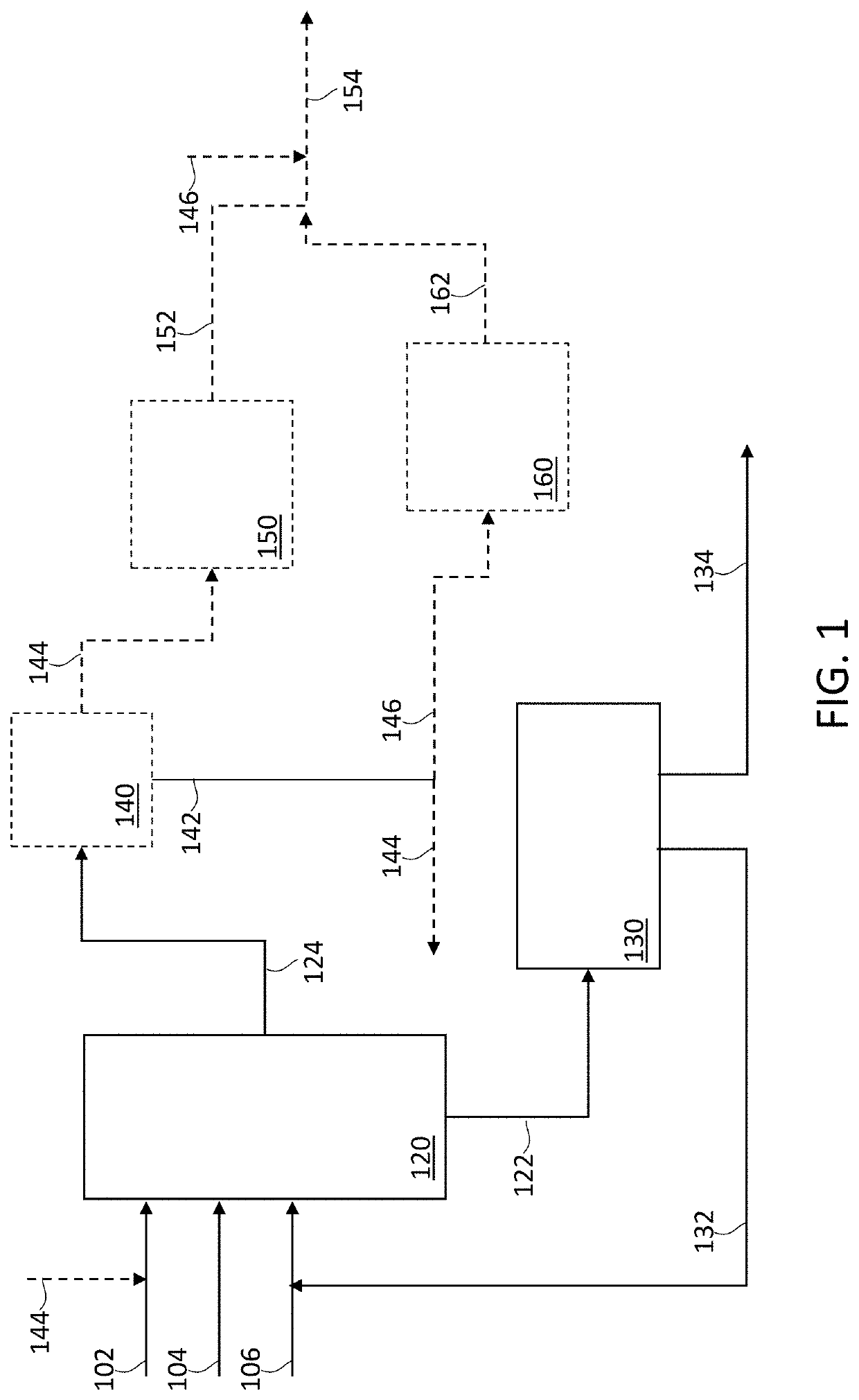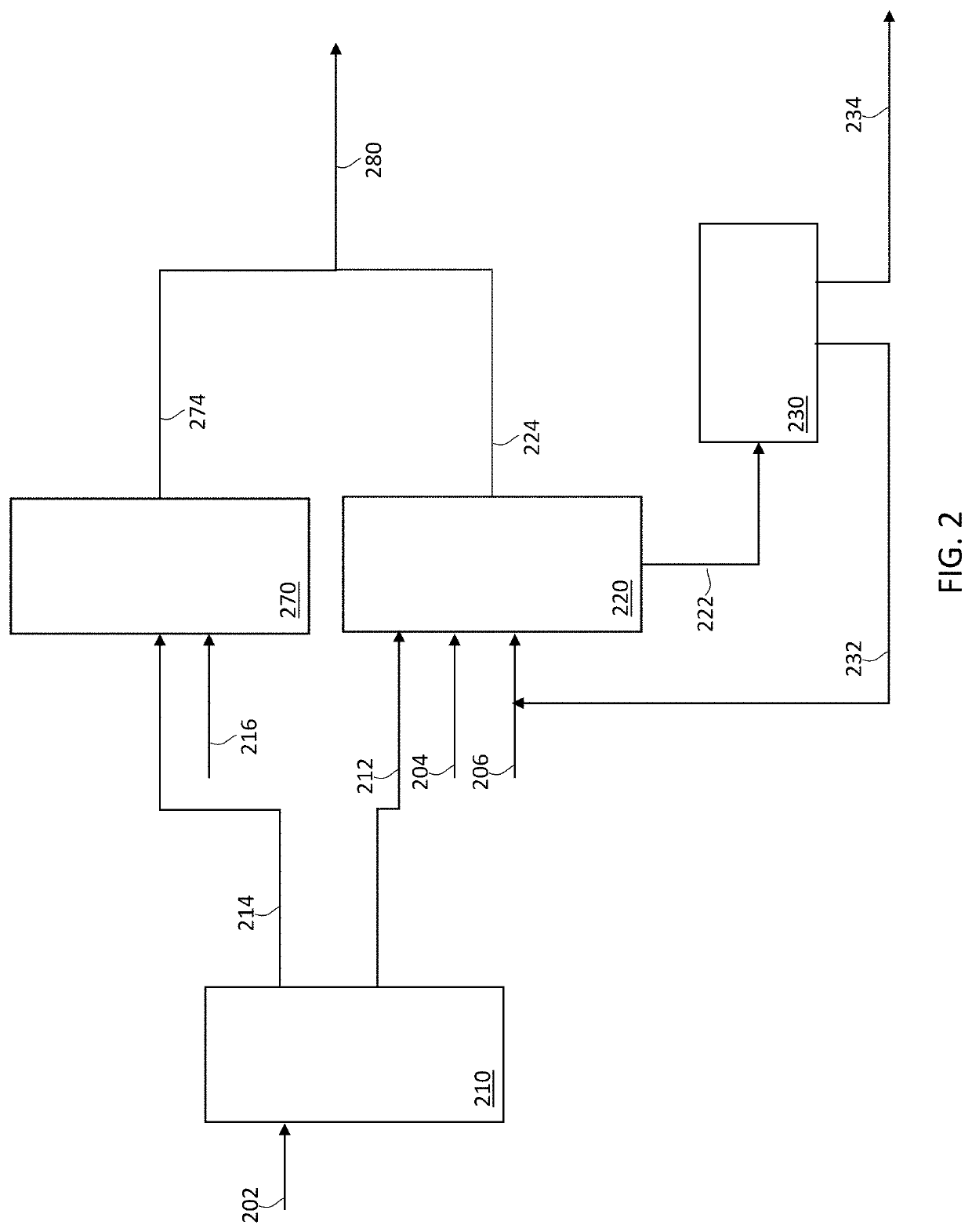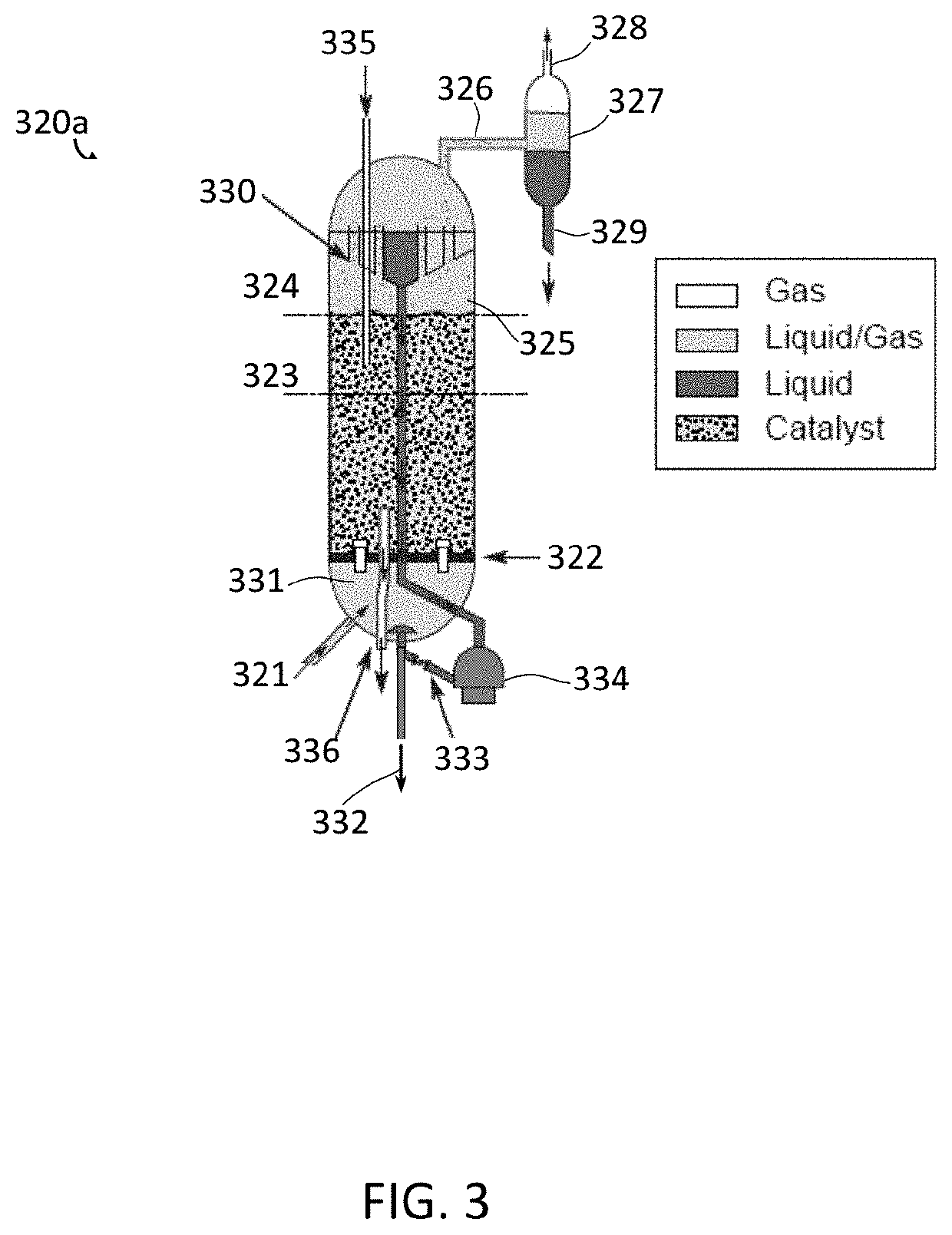Process for upgrading hydrocarbon feedstock utilizing low pressure hydroprocessing and catalyst rejuvenation/regeneration steps
- Summary
- Abstract
- Description
- Claims
- Application Information
AI Technical Summary
Benefits of technology
Problems solved by technology
Method used
Image
Examples
example
[0066]1000 Kg of Arab heavy crude oil, the properties of which are shown in Table 1, is hydroprocessed in a configuration following that shown in FIG. 1. The catalyst used was a commercially available alumina based ebullated-bed catalyst. The catalyst contained nickel and molybdenum as active phase metals. Sweet-light synthetic crude oil was produced. The experiments were carried out operating the ebullated-bed reactor at a LHSV of 0.5 h−1, an operating temperature of 370° C. and a hydrogen partial pressure of 80 bars. The material balance is given in Table 1.
TABLE 1Material BalanceArabFreshSyntheticSpentRejuvenatedCatalystStream NameHeavy COHydrogenCatalystCrude OilCatalystCatalystLossFeed Ratekg100074.002.6910673.22.560.13DensityKg / Lt0.89040.876API Gravity°27.430.0CarbonW %84.823385.04HydrogenW %12.18100.0012.83SulfurW %2.82971.99Nitrogenppmw1670535MCRW %8.22.55Nickelppmw16.41Vanadiumppmw56.41C5-W %7.8AsphaltenesC7-W %4.2AsphaltenesTolueneW %0.0008insolublesAshes W %0.014Compositi...
PUM
 Login to View More
Login to View More Abstract
Description
Claims
Application Information
 Login to View More
Login to View More - R&D
- Intellectual Property
- Life Sciences
- Materials
- Tech Scout
- Unparalleled Data Quality
- Higher Quality Content
- 60% Fewer Hallucinations
Browse by: Latest US Patents, China's latest patents, Technical Efficacy Thesaurus, Application Domain, Technology Topic, Popular Technical Reports.
© 2025 PatSnap. All rights reserved.Legal|Privacy policy|Modern Slavery Act Transparency Statement|Sitemap|About US| Contact US: help@patsnap.com



